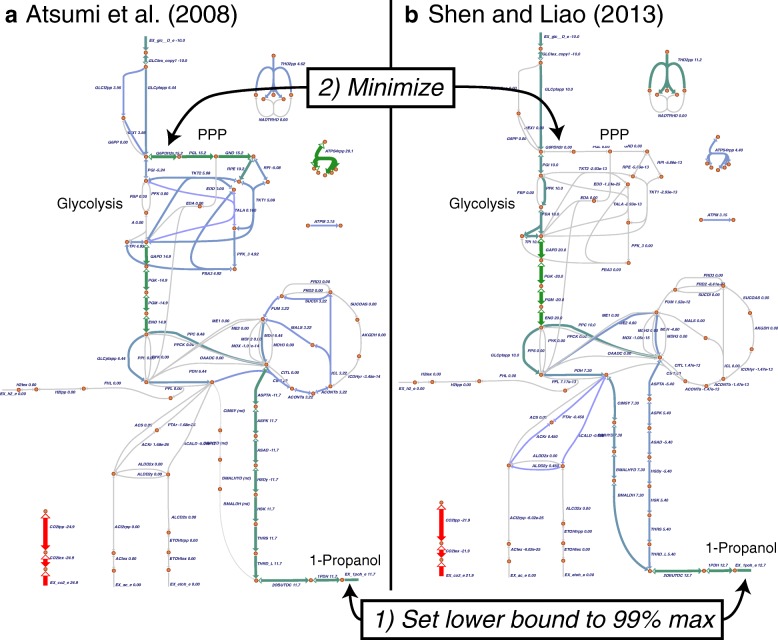Fig. 3.
Pathway usage for two heterologous routes to 1-propanol production in E. coli. The pentose phosphate pathway (PPP) flux necessary for each heterologous production pathway can be compared by, first, forcing production of 1-propanol to be 99% of the maximum value (by setting the lower bound of the 1-propanol exchange reaction) and, second, minimizing flux through the first step in the PPP. (a) The 1-propanol pathway reported by Atsumi et al. [22] uses a single path to achieve 1-propanol production. It requires significant PPP flux and has a lower overall yield. (b) The pathway reported by Shen and Liao [23] uses two pathway synergistically to achieve higher yield. The pathway is stoichiometrically balanced with glycolysis, so it requires no PPP flux

